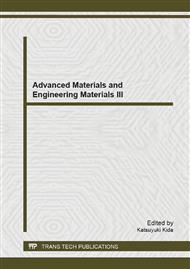p.610
p.614
p.621
p.625
p.630
p.634
p.638
p.644
p.649
Monitoring Welding Discontinuities with Fuzzy Control Chart
Abstract:
Over the past few years, several extensions of the traditional control charts have been proposed to adapt to the fuzziness inevitably existing in practical manufacturing processes. This paper proposed a fuzzy u chart to monitor the nonconformity of industrial products. A thorough evaluation of manufacturing conditions was also developed with certain categorization rules which can classify the process into four consequences, including in-control, rather in-control, rather out-of-control and out-of-control. With an empirical study of monitoring the weld discontinuities, our proposed approach can efficiently provide more sufficient and justified classification results in contrast with the traditional online processes monitoring methods.
Info:
Periodical:
Pages:
630-633
Citation:
Online since:
February 2014
Authors:
Price:
Сopyright:
© 2014 Trans Tech Publications Ltd. All Rights Reserved
Share:
Citation:


